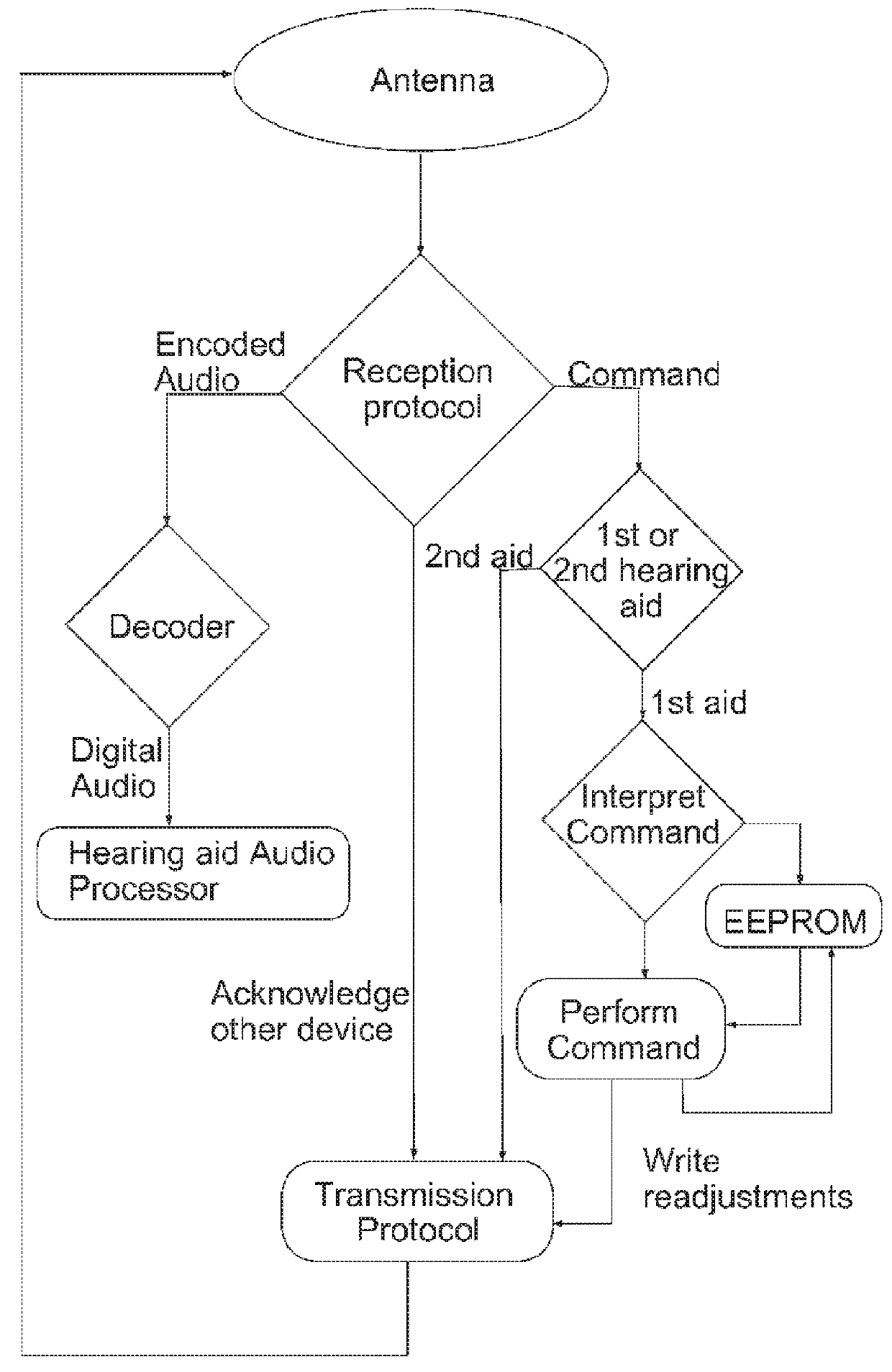Method and system for wireless communication between a telephone and a hearing aid
a wireless communication and telephone technology, applied in the field of hearing aids, can solve the problems of time-consuming, difficult use of telephones in connection with hearing aids, and too small speaker coils to create a magnetic field with sufficient signal strength
- Summary
- Abstract
- Description
- Claims
- Application Information
AI Technical Summary
Benefits of technology
Problems solved by technology
Method used
Image
Examples
Embodiment Construction
[0027]In the present context, the word telephone can mean any type of telephone, i.e. a handset for a traditional landline telephone, a cordless telephone like a Digital Enhanced Cordless Telecommunications (DECT) phone, a cell phone or any other type of telephone. The signal line leading to the speaker may be any kind of transmission line, e.g. a line for transmitting an analogue signal, a sigma-delta signal, or a pure digital signal.
[0028]FIG. 1 is a diagram of the interface circuit 14 incorporated in a telephone 10, which further has a microphone 12 and a loudspeaker 11. The interface circuit 14 is connected to the microphone 12, the loudspeaker 11 and a telephone power supply (not shown). The interface circuit 14 has a radio transceiver and antenna circuitry for establishing a wireless link 30 between the telephone 10 and one or more hearing aids 40. A hearing aid 40 has a signal processor 20 with a wireless capability.
[0029]FIG. 2 shows the components in a system according to a...
PUM
 Login to View More
Login to View More Abstract
Description
Claims
Application Information
 Login to View More
Login to View More - R&D
- Intellectual Property
- Life Sciences
- Materials
- Tech Scout
- Unparalleled Data Quality
- Higher Quality Content
- 60% Fewer Hallucinations
Browse by: Latest US Patents, China's latest patents, Technical Efficacy Thesaurus, Application Domain, Technology Topic, Popular Technical Reports.
© 2025 PatSnap. All rights reserved.Legal|Privacy policy|Modern Slavery Act Transparency Statement|Sitemap|About US| Contact US: help@patsnap.com



